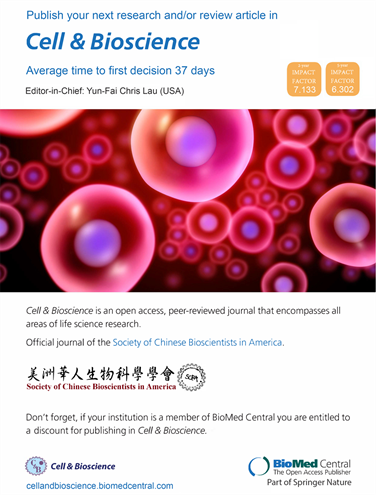Med1 通过激活 Nrf2 抑制急性肝衰竭中的铁蛋白沉积并减轻肝损伤
IF 6.1
2区 生物学
Q1 BIOCHEMISTRY & MOLECULAR BIOLOGY
引用次数: 0
摘要
肝细胞大量死亡和缺乏特异性药物治疗是急性肝衰竭(ALF)预后不良的重要原因。铁蜕变是参与 ALF 的一种重要的细胞死亡形式。在本研究中,我们旨在确定介导复合体亚基 1(Med1)对铁凋亡的影响及其在 ALF 中的潜在保肝作用。在脂多糖(LPS)/D-半乳糖胺(D-GalN)诱导的 ALF 小鼠的肝脏中,以及在体外受到 H2O2 或 TNF-α/D-GalN 损伤的肝细胞中,Med1 的表达都有所减少。Med1 的过表达通过抑制铁突变减轻了 ALF 小鼠的肝损伤并降低了死亡率。Med1抑制麦角固醇诱导的肝细胞铁氧化的机制涉及核因子红细胞2相关因子2(Nrf2)及其下游抗氧化基因血红素加氧酶-1(HO-1)、谷氨酸半胱氨酸连接酶催化(GCLC)和NAD(P)H醌氧化还原酶1(NQO1)的上调。此外,Med1 的过表达能抑制 LPS/D-GalN 诱导的 ALF 小鼠肝脏中促炎细胞因子肿瘤坏死因子-α(TNF-α)和白细胞介素-6(IL-6)的转录。总之,我们的研究结果表明,Med1 通过激活 Nrf2 可抑制铁变态反应并减轻 LPS/D-GalN 诱导的 ALF 的肝损伤。这些发现证实了以 Med1-Nrf2 轴为靶点治疗 ALF 患者的可行性。本文章由计算机程序翻译,如有差异,请以英文原文为准。
Med1 inhibits ferroptosis and alleviates liver injury in acute liver failure via Nrf2 activation
Extensive hepatocyte mortality and the absence of specific medical therapy significantly contribute to the unfavorable prognosis of acute liver failure (ALF). Ferroptosis is a crucial form of cell death involved in ALF. In this study, we aimed to determine the impact of Mediator complex subunit 1 (Med1) on ferroptosis and its potential hepatoprotective effects in ALF. Med1 expression is diminished in the liver of lipopolysaccharide (LPS)/D-galactosamine (D-GalN)-induced ALF mice, as well as in hepatocytes damaged by H2O2 or TNF-α/D-GalN in vitro. Med1 overexpression mitigates liver injury and decreases the mortality rate of ALF mice by ferroptosis inhibition. The mechanism by which Med1 inhibits erastin-induced ferroptosis in hepatocytes involves the upregulation of nuclear factor erythroid 2-related factor 2 (Nrf2) and its downstream antioxidant genes heme oxygenase-1 (HO-1), glutamate cysteine ligase catalytic (GCLC), and NAD(P)H quinone oxidoreductase 1 (NQO1). Furthermore, Med1 overexpression suppresses the transcription of proinflammatory cytokines tumor necrosis factor-α (TNF-α) and interleukin-6 (IL-6) in the liver of mice with LPS/D-GalN-induced ALF. Overall, our research findings indicate that Med1 suppresses ferroptosis and alleviates liver injury in LPS/D-GalN-induced ALF through the activation of Nrf2. These findings substantiate the therapeutic viability of targeting the Med1-Nrf2 axis as a means of treating individuals afflicted with ALF.
求助全文
通过发布文献求助,成功后即可免费获取论文全文。
去求助
来源期刊

Cell and Bioscience
BIOCHEMISTRY & MOLECULAR BIOLOGY-
CiteScore
10.70
自引率
0.00%
发文量
187
审稿时长
>12 weeks
期刊介绍:
Cell and Bioscience, the official journal of the Society of Chinese Bioscientists in America, is an open access, peer-reviewed journal that encompasses all areas of life science research.
 求助内容:
求助内容: 应助结果提醒方式:
应助结果提醒方式:


